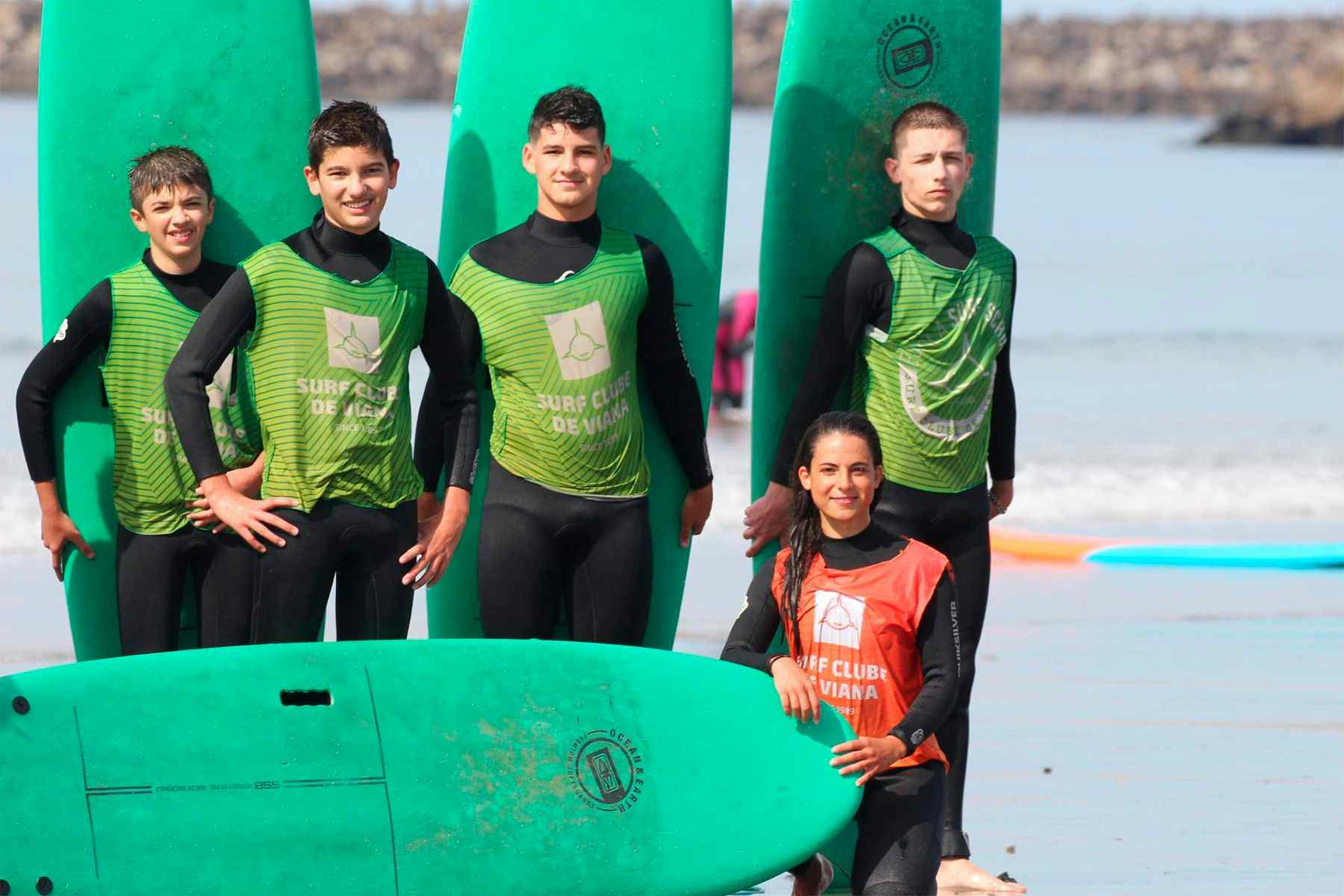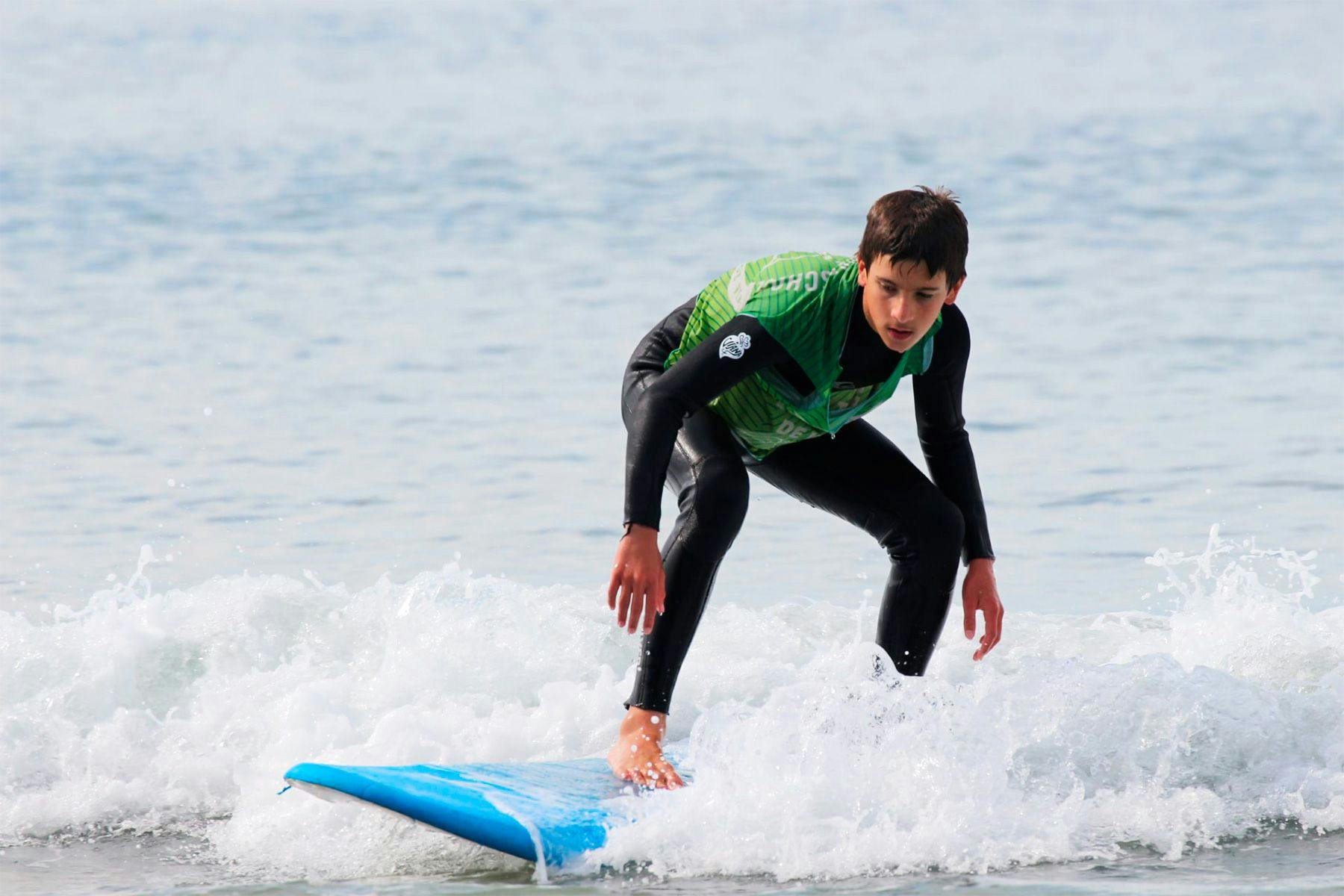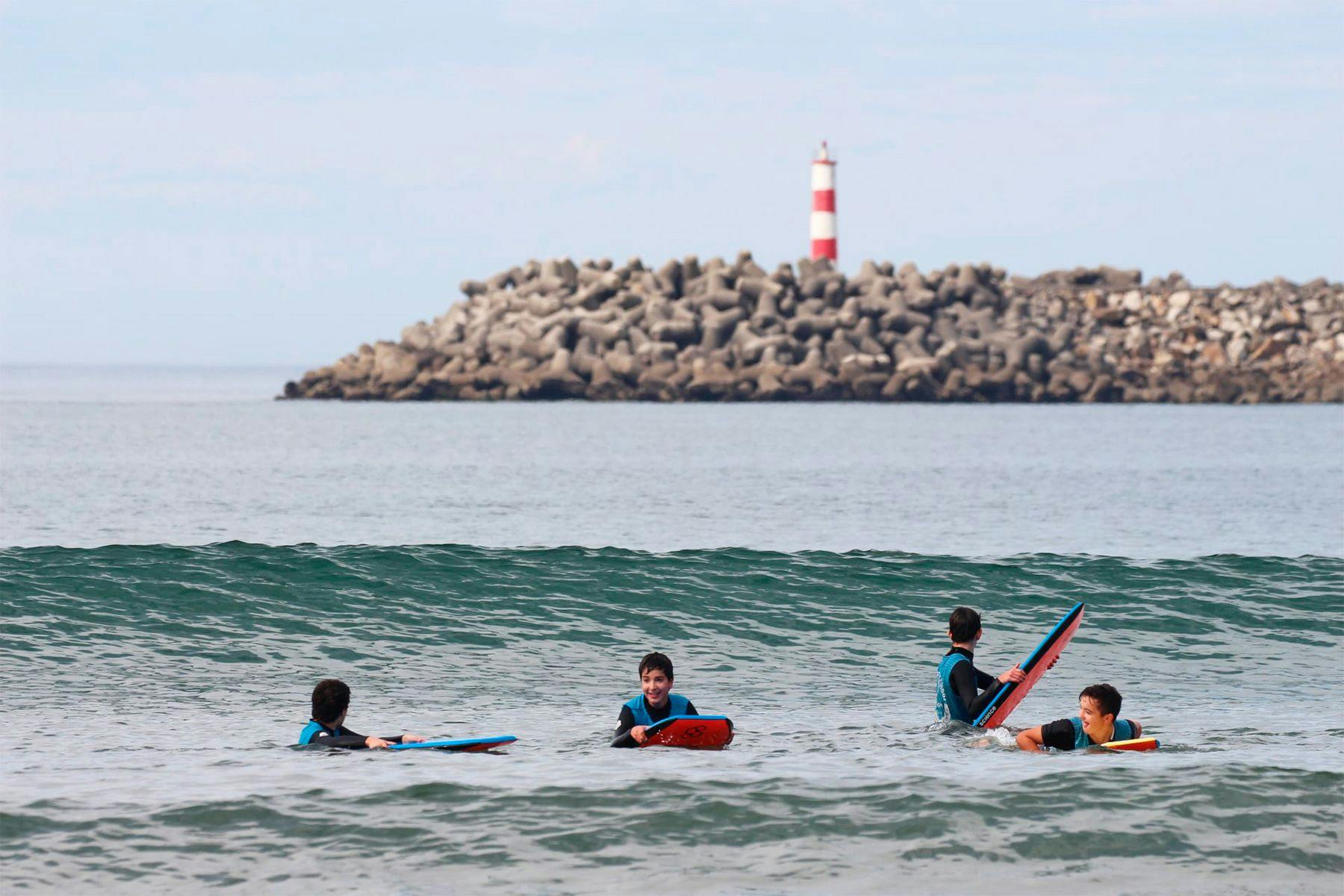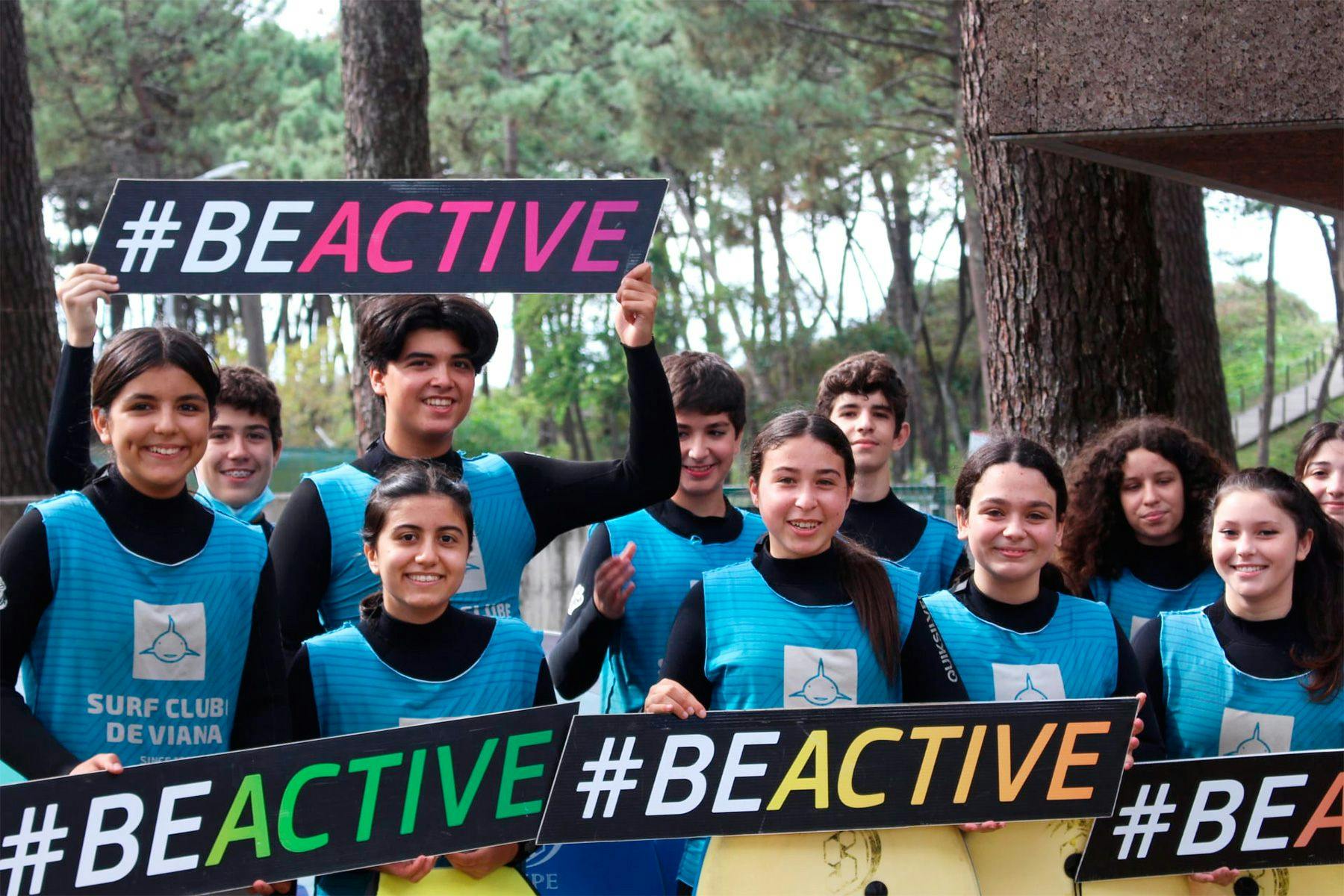Community Projects, Surf CoachingSurfing At School

Surfing On The Physical Education Curriculum And The Impact On Students’ Well-Being
Like many active pursuits, surfing facilitates the development of physical, psychological, cognitive, and even social well-being. So much so that it has been “used” as a tool for various (surfing) interventions aimed at children and adolescents in specific social and health contexts – from empowering at-risk youth to therapy for children with disabilities. Yet, despite its wide-ranging benefits, as well as the fact that roughly 80% of children around the world between the ages of 11 and 17 don’t meet the current global recommendations for daily exercise, these interventions remain underexplored. So what if, like many physical activities, surfing could be introduced into the lives of children through school programmes, as an instigator of active lifestyles and healthy habits, a sort of a stepping stone in enhancing their quality of life?

“The idea for this research came from another one of our projects, The Benefits of Outdoor Sports For Society,” says Dr Bruno Silva, an Associate Professor at the Polytechnic Institute of Viana do Castelo (IPVC) in Portugal and one of the authors of a pioneering study that looks at including surfing in the PE curriculum as a means to improve the well-being of children and adolescents. “We realised that the practice of watersports brought many benefits, among them the educational part and learning about life. So the question became: Would surfing by itself have these benefits?”
The research was part of the Viana do Castelo “School of Nautical Activities”, a programme that links physical education teachers, specialised sports instructors, and local clubs to plan and implement bespoke surfing, canoeing, rowing and sailing lessons as part of the PE curriculum of elementary-to-high school youth. For this study, a total of 190 students took part in a six-week-long surfing programme held by the Surfing Viana High Performance Center at Praia do Cabedelo.

As per International Surf Therapy Organization recommendations, Bruno and his team evaluated the group and the impacts surfing had on their well-being and socialization with the help of a pre and post-intervention questionnaire. The Warwick-Edinburgh Mental Wellbeing Scale comprised the first, quantitative part of the questionnaire, with fourteen questions divided into the categories Individual Expectations, Self-Confidence, and Socialization in Surfing, and rated according to a five-points Likert scale in between “none of the time” and “all of the time”.
Q1: “I’ve Been Feeling Optimistic About The Future”;
Q2: “I’ve Been Feeling Useful”;
Q3: “I’ve been feeling relaxed”;
Q4: “I’ve Been Feeling Interested In Other People”;
Q5: “I’ve Had Energy To Spare”;
Q6: “I’ve Been Dealing With Problems Well”;
Q7: “I’ve Been Thinking Clearly”;
Q8: “I’ve Been Feeling Good About Myself”;
Q9: “I’ve been feeling close to other people”;
Q10: “I’ve Been Feeling Confident”;
Q11: “I’ve been able to make up my own mind about things”;
Q12: “I’ve Been Feeling Loved”;
Q13: “I’ve Been Interested In New Things”;
Q14: “I’ve Been Feeling Cheerful”.
The second part of the questionnaire was a qualitative analysis in which participants were asked to write the first three words that came to mind when thinking of the beach and surfing. A third section was introduced in the post-intervention questionnaire only, asking students to respond “Yes” or “No” to the statements: “I feel safe”; “I had fun”; “I made new friends”; “I feel part of a group”; “I feel like an important part of a team or a group”.

Comparing the answers from the pre and post intervention, the two most valued were Q5 (“I’ve Had Energy To Spare”) and Q14 (“I’ve Been Feeling Cheerful”). Results of the quantitative analysis showed a total increase of 62.79%, with the category Individual Expectations representing 42.05% of that total, and Self-Confidence being the one to undergo the most significant increase, from 4.02±0.66 to 4.13±0.76 in the Likert scale. Meanwhile, the qualitative analysis showed that more than 90% of participants felt safe when surfing, nearly half reported making new friends, and over 80% felt as an integral part of a group. Which, according to Bruno, was fundamental in reinforcing the positive effects of surfing could have as part of PE classes: “Even though grades didn’t mix, being in this more informal, as well as more challenging environment, and dealing with new materials and equipment led many students to create new connections with colleagues who are already in their class.”

Another remarkable finding was the strong connection many children developed with the marine environment. “The first concrete change portraying the benefits of these sessions was the breaking of the barrier related to going to the beach in winter,” says Bruno. “Beyond considering this a safe activity, the students realised that by following some “rules” and guidelines they can go surfing in wintertime, and under different sea conditions. It [the sessions] increased their knowledge of the sea, made them get down to the beach and observe the conditions: How’s the current? How’s the swell? Where is the best spot to paddle out from?” Moreover, Bruno underscores that the programme helped raise the childrens’ awareness of environmental issues transpiring in their own backyard: “We witnessed that they began to understand and connect better with the environment, to learn more about the beach, realise that there are some problems with the pollution which they hadn’t thought existed because when they get to the beach in summertime, it is usually clean.”
But perhaps more importantly, the programme achieved what it set out to do: show that surfing can improve the children’s overall well-being. “We saw that at the end of the sessions many of them didn’t want to go home,” emphasises Bruno. “There were two children in particular who, on the first day of activities, said they would never do it – but after only two classes were the first ones to be ready to get out there and wanted to stay in for as long as possible.” Recalling the sessions, Bruno says that this radical change “was explicit in the joy expressed in their faces and shouts of happiness when they caught a wave”, and that many students later signed up to the local surf club to carry on surfing.
Being the first academic attempt to investigate surfing as a unique PE learning environment for children and adolescents, the researchers were unable to compare the results with other similar methodologies. On top of that, their original plan of running another twelve-week programme to form a basis of comparison fell through due to COVID. Nevertheless, even with this exploratory data they were already able to verify that indeed there were benefits, which left them with the question: If the duration was prolonged, would the benefits be greater?
“This is an idea that, for me, can and should be implemented in the PE curriculum of coastal schools across the world,” says Bruno. “Not only because of the aforementioned benefits for children, but also because of what we saw in relation to surfing being an effective activity for managing individual expectations, which grow and give a much more positive perspective to the future of people’s lives than when it was not present.”
In order to create such a programme successfully, Bruno highlights a couple of points. First, there needs to be a well-tailored framework and management strategy, taking into account the most effective way to implement the lessons – and that’s where surf clubs and experienced professionals come in. Second, it’s crucial to garner the support of municipalities (in this case Viana do Castelo), who might be able to grant free transportation for students to and from the beach, facilitate the purchase of materials and equipment for local clubs, and pay coaches and trainers to assist the PE teachers.

Bringing surfing into the (school) lives of children has huge potential to mitigate the aforementioned shortage of physical activity whilst fostering more consciousness about the environment. At the same time, it promotes socialisation via face-to-face contact, which, in an increasingly digital era, will not only influence their well-being or their academic journey, but have a fundamental role in the person they become. “We are bio-psycho-motor beings, which means social matters are also linked to motor skills,” emphasises Bruno. “As surfers, we are very aware of this connection; a connection both with who surrounds us and what surrounds us.”
**********
The author and Surf Simply would like to thank Dr Bruno Silva for his assistance with the article. For more information on how to structure and implemente surfing in your school, feel free to reach out to Bruno on silvabruno@esdl.ipvc.pt. Follow the Viana Surf Club on Facebook and Instagram for fresh surfing news from Portugal.
Reference: Silva, B., Cruz, G., Bentes, R., & Ricardo Franco Lima. (2022). Surfing on physical education curriculum and the impact on student’s well-being. Journal of Physical Education , 33(1), e-3317. https://doi.org/10.4025/jphyseduc.v33i1